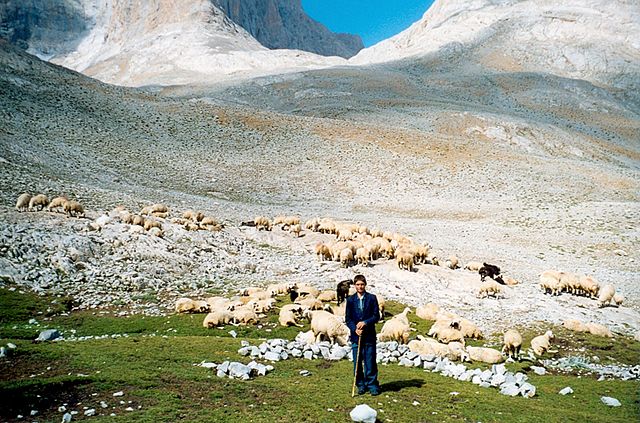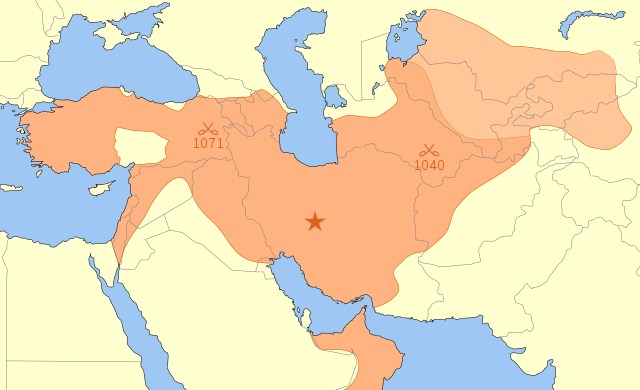
| OGHUZ TURKS Languages
: Oghuz languages
The Old World in 600 AD The Oghuz, Oguz or Ghuzz Turks (Romanized: Oyuz) were a western Turkic people that spoke the Oghuz branch of the Turkic language family. In the 8th century, they formed a tribal confederation conventionally named the Oghuz Yabgu State in central Asia. The name Oghuz is a Common Turkic word for "tribe". Byzantine sources call the Oghuz the Uzes (Ouzoi). By the 10th century, Islamic sources were calling them Muslim Turkmens, as opposed to shamanist or Buddhist. By the 12th century this term had passed into Byzantine usage and the Oghuzes were overwhelmingly Muslim. The term "Oghuz" was gradually supplanted among the Turks themselves by Turkmen and Turcoman, (Romanized: Türkmen or Türkmân) from the mid 900's on, a process which was completed by the beginning of the 1200s.
The Oghuz confederation migrated westward from the Jeti-su area after a conflict with the Karluk allies of the Uyghurs. Today, a percentage of the residents of Turkey, Azerbaijan and Turkmenistan are descendants of Oghuz Turks and their language belongs to the Oghuz group of the Turkic languages family. Kara-Khanid scholar Mahmud al-Kashgari wrote that of all the Turkic languages, that of the Oghuz was the simplest. He also observed that the Oghuz had been separated for so long from the eastern Turks, that language of eastern Turks in east could be clearly distinguished from the language of Oghuz and Kipchak further west.
In the 9th century, the Oghuzes from the Aral steppes drove Bechens from the Emba and Ural River region toward the west. In the 10th century, they inhabited the steppe of the rivers Sari-su, Turgai, and Emba to the north of Lake Balkhash of modern-day Kazakhstan. A clan of this nation, the Seljuks, embraced Islam and in the 11th century entered Persia, where they founded the Great Seljuk Empire. Similarly in the 11th century, a Tengriist Oghuz clan—referred to as Uzes or Torks in the Russian chronicles—overthrew Pecheneg supremacy in the Russian steppe. Harried by another Turkic people, the Kipchaks, these Oghuz penetrated as far as the lower Danube, crossed it and invaded the Balkans, where they were struck down by an outbreak of plague, causing the survivors either to flee or to join the Byzantine imperial forces as mercenaries (1065).
Oghuz Yabgu State in Turkestan, 750 – 1055
Head of male Seljuk royal figure, 12 - 13th century, from Iran The Oghuz seem to have been related to the Pechenegs, some of whom were clean-shaven and others of whom had small 'goatee' beards. According to the book Attila and the Nomad Hordes, "Like the Kimaks they set up many carved wooden funerary statues surrounded by simple stone balbal monoliths." The authors of the book go on to note that "Those Uzes or Torks who settled along the Russian frontier were gradually Slavicized, though they also played a leading role as cavalry in 1100- and early 1200-era Russian armies, where they were known as Black Hats... Oghuz warriors served in almost all Islamic armies of the Middle East from the 1000s onwards, in Byzantium from the 800's, and even in Spain and Morocco." In later centuries, they adapted and applied their own traditions and institutions to the ends of the Islamic world and emerged as empire-builders with a constructive sense of statecraft.
Linguistically, the Oghuz belong to the Common Turkic speaking group, characterized by sound correspondences such as Common Turkic /-š/ versus Oghuric /-l/ and Common Turkic /-z/ versus Oghuric /-r/.Within the Common Turkic group, the Oghuz languages share these innovations: loss of Proto-Turkic gutturals in suffix anlaut, loss of /?/ except after /a/, /g/ becoming either /j/ or lost, voicing of /t/ to /d/ and of /k/ to /g/, and */ð/ becomes /j/.
Apart from the Seljuks, dynasties of Khwarazmians, Qara Qoyunlu, Aq Qoyunlu, Ottomans and Afsharids are also believed to descend from the Oghuz-Turkmen tribes of Begdili, Yiva, Bayandur, Kayi and Afshar respectively.
The Ottoman dynasty, who gradually took over Anatolia after the fall of the Seljuks, toward the end of the 13th century, led an army that was also predominantly Oghuz. The Ottomans proved to be superior to other local Oghuz Turkish states. Ahmed Bican Yazicioglu, in early 15th century, traced Osman's geneaology to Oghuz Khagan, the mythical ancestors of Western Turks, through his senior grandson of his senior son, so giving the Ottoman sultans primacy among Turkish monarchs.
Origins
:
During the 2nd century BC, according to ancient Chinese sources, a steppe tribal confederation known as the Xiongnu and their allies, the Wusun (probably an Indo-European people) defeated the neighboring Indo-European-speaking Yuezhi and drove them out of western China and into Central Asia. Various scholarly theories link the Xiongnu to Turkic peoples and/or the Huns. Bichurin claimed that the first usage of the word Oghuz appears to have been the title of Oguz Kagan, whose biography shares similarities with the biography, recorded by Han Chinese, of Xiongnu leader Modu Shanyu (or Mau-Tun), who founded the Xiongnu Empire. However, Oghuz Khan narratives were actually collected in Compendium of Chronicles by Ilkhanid scholar Rashid-al-Din in the early 14th century.
Sima Qian recorded the name Wujie, of a people hostile to the Xiongnu and living immediately west of them, in the area of the Irtysh River, near Lake Zaysan. Golden suggests that these might be Chinese renditions of *Ogur ~ *Oguz, yet uncertainty remains. According to one theory, Hujie is just another transliteration of Yuezhi and may refer to the Turkic Uyghurs; however, this is controversial and has few scholarly adherents.
Yury Zuev (1960) links the Oghuz to the Western Turkic tribe Gusu < (MC *kuo-suo) in the 8th-century encyclopaedia Tongdian (or erroneously Shisu in the 11th century Zizhi Tongjian). Zuev also noted a parallel between two passages:
•
O ne
from the 8th-century Taibo Yinjing"Venus's Secret Classic"
by Li Quan which mentioned the "Three Qu" after the Shí
Jiàn "Ten Arrows" and Jiu Xìng "Nine
Surnames"; and
A bust of Dede Korkut—the central character of an epic dating from the 9th Centuries—in Baku Byzantine emperor Constantine VII Porphyrogennetos mentioned the Uzi and Mazari (Hungarians) as neighbours of the Pechenegs.
A number of subsequent tribal confederations bore the name Oghuz, often affixed to a numeral indicating the number of united tribes included. These include references to the Sekiz-Oghuz ("eight oghuz") and the Tokuz-Oghuz ("nine oghuz"). The tribes of the Sekiz-Oghuz and the Tokuz-Oghuz originally occupied different areas in the vicinity of the Altai Mountains. However, the Transoxanian Oghuz Turks who founded the Oghuz Yabgu State were not the same tribal confederation as the Toquz Oghuz from whom emerged the founders of Uyghur Khaganate.
During the establishment of the Göktürk Khaganate—a region extending from east of the Caspian Sea to the east of the Aral Sea and neighbouring the Karakum Desert in the south, and similar to modern Kazakhstan—the Oghuz, in the above sense, [which?] remained in northeastern areas of the Altai, along the Tula River and near the Barlyk River (in present-day northern Mongolia).[citation needed]
By the time of the Orkhon inscriptions (8th century AD) "Oghuz" was being applied generically to all inhabitants of the Göktürk Khaganate. Within the khaganate, the Oghuz community gradually expanded, incorporating other tribes. Ibn al-Athir, an Arab historian, claimed that the Oghuz Turks were settled mainly in Transoxiana, between the Caspian and Aral Seas, during the period of the caliph Al-Mahdi (after 775 AD). By 780, the eastern parts of the Syr Darya were ruled by the Karluk Turks and to their west were the Oghuz. Transoxiana, their main homeland in subsequent centuries became known as the "Oghuz Steppe".
During the period of the Abbasid caliph Al-Ma'mun (813–833), the name Oghuz starts to appear in the works of Islamic writers. The Book of Dede Korkut, a historical epic of the Oghuz, contains historical echoes of the 9th and 10th centuries but was likely written several centuries later.
Social units :
Turkmen woman at the entrance to a yurt in Turkestan; 1911 color photograph by Prokudin-Gorskii
Traditional Turkmen clothes, Dursunbey, Balikesir Province The militarism that the Oghuz empires were very well known for was rooted in their centuries-long nomadic lifestyle. In general they were a herding society which possessed certain military advantages that sedentary societies did not have, particularly mobility. Alliances by marriage and kinship, and systems of "social distance" based on family relationships were the connective tissues of their society.
In Oghuz traditions, "society was simply the result of the growth of individual families". But such a society also grew by alliances and the expansion of different groups, normally through marriages. The shelter of the Oghuz tribes was a tent-like dwelling, erected on wooden poles and covered with skin, felt, or hand-woven textiles, which is called a yurt.
Their cuisine included yahni (stew), kebabs, Toyga soup (meaning "wedding soup"), Kimiz (a traditional drink of the Turks, made from fermented horse milk), Pekmez (a syrup made of boiled grape juice) and helva made with wheat starch or rice flour, tutmac (noodle soup), yufka (flattened bread), katmer (layered pastry), chorek (ring-shaped buns), bread, clotted cream, cheese, milk and ayran (diluted yogurt beverage), as well as wine.
Social order was maintained by emphasizing "correctness in conduct as well as ritual and ceremony". Ceremonies brought together the scattered members of the society to celebrate birth, puberty, marriage, and death. Such ceremonies had the effect of minimizing social dangers and also of adjusting persons to each other under controlled emotional conditions.
Patrilineally related men and their families were regarded as a group with rights over a particular territory and were distinguished from neighbours on a territorial basis. Marriages were often arranged among territorial groups so that neighbouring groups could become related, but this was the only organizing principle that extended territorial unity. Each community of the Oghuz Turks was thought of as part of a larger society composed of distant as well as close relatives. This signified "tribal allegiance". Wealth and materialistic objects were not commonly emphasized in Oghuz society and most remained herders, and when settled they would be active in agriculture.
Status within the family was based on age, gender, relationships by blood, or marriageability. Males as well as females were active in society, yet men were the backbones of leadership and organization. According to the Book of Dede Korkut, which demonstrates the culture of the Oghuz Turks, women were "expert horse riders, archers, and athletes". The elders were respected as repositories of both "secular and spiritual wisdom".
Homeland in Transoxiana :
Physical map of Central Asia from the Caucasus in the northwest, to Mongolia in the northeast In the 700s, the Oghuz Turks made a new home and domain for themselves in the area between the Caspian and Aral seas, a region that is often referred to as Transoxiana, the western portion of Turkestan. They had moved westward from the Altay mountains passing through the Siberian steppes and settled in this region, and also penetrated into southern Russia and the Volga from their bases in west China. In the 11th century, the Oghuz Turks adopted Arabic script, replacing the Old Turkic alphabet.
In
his accredited work titled Diwan Lughat al-Turk, Mahmud of Kashgar,
a Turkic scholar of the 11th century, described the Karachuk Mountains
which are located just east of the Aral Sea as the original homeland
of the Oghuz Turks. The Karachuk mountains are now known as the
Tengri Tagh (Tian Shan in Chinese) Mountains, and they are adjacent
to Syr Darya.
It was in this area that they later founded the Seljuk Empire, and it was from this area that they spread west into western Asia and eastern Europe during Turkic migrations from the 9th until the 12th century. The founders of the Ottoman Empire were also Oghuz Turks.
Poetry and Literature :
A copy of Book of Dede Korkut in Dresden, Germany Oghuz Turkish literature includes the famous Book of Dede Korkut which was UNESCO's 2000 literary work of the year, as well as the Oghuzname, Battalname, Danishmendname, Köroglu epics which are part of the literary history of Azerbaijanis, Turks of Turkey and Turkmens. The modern and classical literature of Azerbaijan, Turkey and Turkmenistan are also considered Oghuz literature, since it was produced by their descendants.
The Book of Dede Korkut is an invaluable collection of epics and stories, bearing witness to the language, the way of life, religions, traditions and social norms of the Oghuz Turks in Azerbaijan, Turkey, Iran (West Azerbaijan, Golestan) and parts of Central Asia including Turkmenistan.
Oghuz and Yörüks :
Yörük camp in Taurus mountains, 19th century
Yörük shepherd in the Taurus Mountains Yörüks are an Oghuz ethnic group, some of whom are still semi-nomadic, primarily inhabiting the mountains of Anatolia and partly Balkan peninsula. Their name derives from the verb from Chagatai language, yörü- "yörümek" (to walk), but Western Turkic yürü- (yürümek in infinitive), which means "to walk", with the word Yörük or Yürük designating "those who walk, walkers".
The Yörük to this day appear as a distinct segment of the population of Macedonia and Thrace where they settled as early as the 14th century. While today the Yörük are increasingly settled, many of them still maintain their nomadic lifestyle, breeding goats and sheep in the Taurus Mountains and further eastern parts of mediterranean regions (in southern Anatolia), in the Pindus (Epirus, Greece), the Šar Mountains (North Macedonia), the Pirin and Rhodope Mountains (Bulgaria) and Dobrudja.[citation needed] An earlier offshoot of the Yörüks, the Kailars or Kayilar Turks were amongst the first Turkish colonists in Europe, (Kailar or Kayilar being the Turkish name for the Greek town of Ptolemaida which took its current name in 1928) formerly inhabiting parts of the Greek regions of Thessaly and Macedonia. Settled Yörüks could be found until 1923, especially near and in the town of Kozani.
List
of Oghuz dynasties :
The Great Seljuq Empire in 1092, upon the death of Malik Shah I Mahmud al-Kashgari listed 22 Oghuz tribes in Diwan Lughat al-Turk. Kashgari further wrote that the Oghuz had originally had 24 tribes, yet two Khalaj tribes separated from the confederation and so were not counted.
Later, Charuklug from Kashgari's list would be omitted. Rashid-al-Din and Abu al-Ghazi Bahadur added three more: Kïzïk, Karkïn, and Yaparlï, to the list in Jami' al-tawarikh (Compendium of Chronicles) and Shajare-i Türk (Genealogy of the Turks), respectively. According to Selçukname , Oghuz Khagan had 6 children (Sun - Gün, Moon - Ay, Star - Yildiz, Sky - Gök, Mountain - Tag, Sea - Dingiz) , and all six would become Khans themselves, each leading four tribes.
Bozoks
(Gray Arrows) :
• Kinik (founders of the Seljuk Empire)
Continued
...
Continued
...
List of Oghuz ethnic groups :
• Azerbaijani
people
•
Turks in Algeria
•
Turks in Saudi
Arabia
Source :
https://en.wikipedia.org/ |
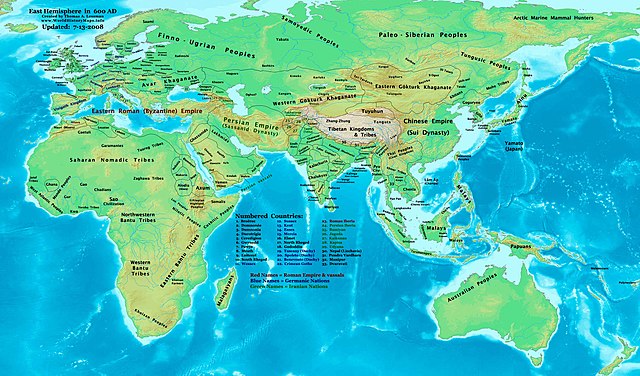
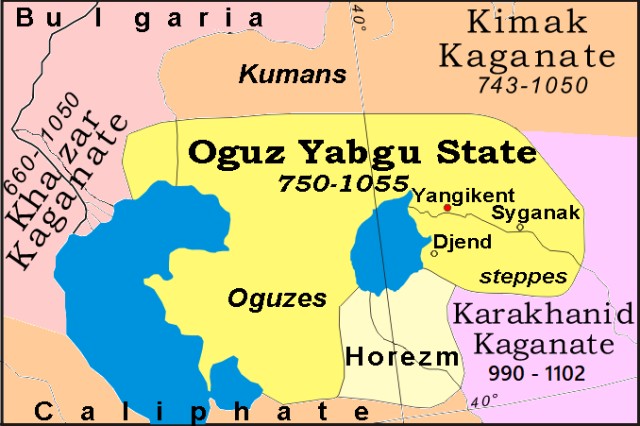
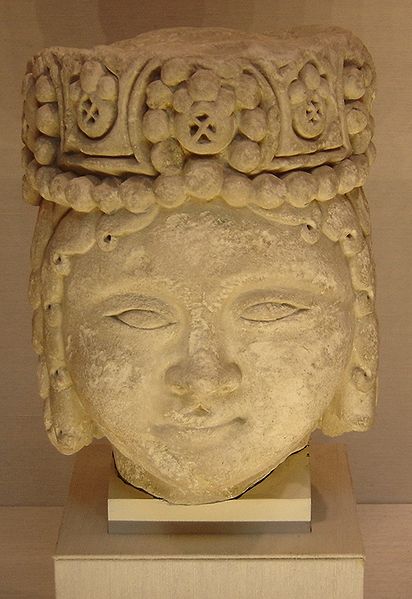
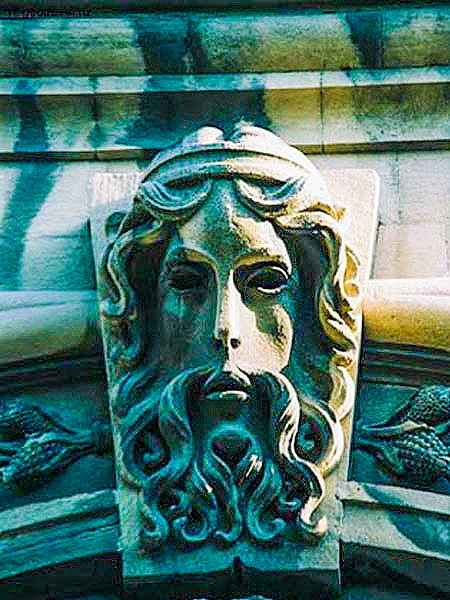
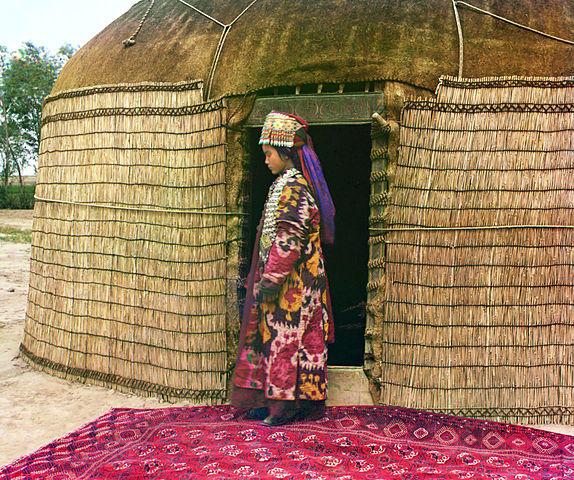

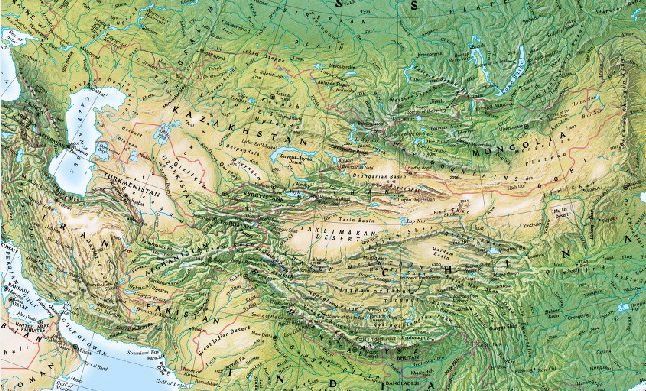
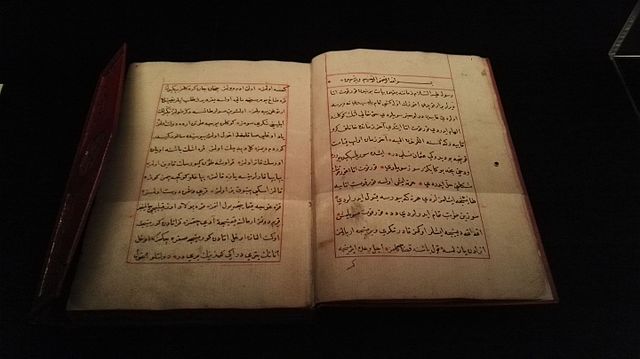
_p010_YOUROUK_ENCAMPMENT_IN_THE_TAURUS.jpg)
